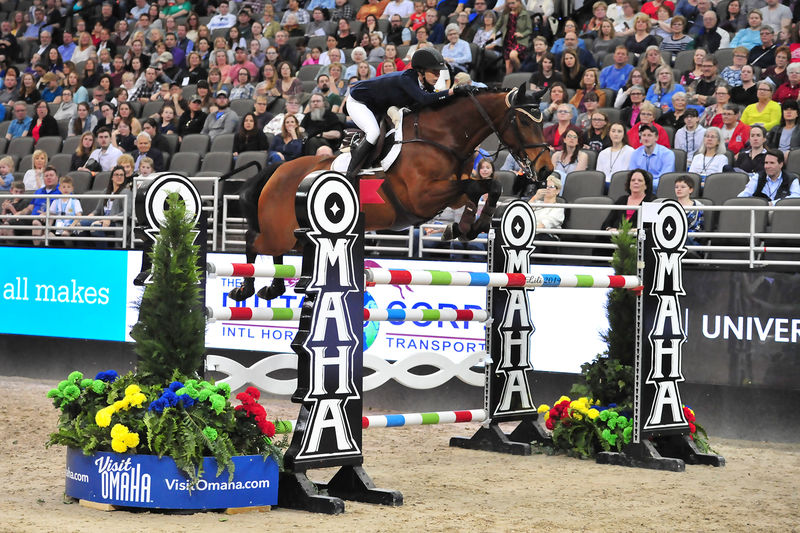By: Brody Robertson of Brody Robertson Showjumps
I’ve had the pleasure of providing the jumps for the International Omaha since 2013.
In designing jumps to be used in competition for the show, we first start with themes, landmarks, and other points of interest from the city/region. Then we try to work each of those ideas into a jump that is eye catching for the spectators and challenging, yet safe, for the horses and riders.
The standards or wings that are on the sides of the jump and hold the poles that the horses jump over are typically about 6’ tall. Because the arena is relatively small in size for horse jumping, we like to keep the width of the standards between 18”-30”. By keeping the footprint of each jump to a minimum, this allows the course designer more flexibility in laying out the track that the horses/riders will navigate while competing over a 10-15 jump course.
We build the jumps largely out of plywood and framing lumber. Different shapes are designed on computer and cut out on a CNC router. After assembly, we paint the jumps with a high gloss finish to really make them shine in the arena. That being said, sometimes we may create more of a challenge to horse/rider by using more muted, softer colors that don’t offer much contrast, thus making it more difficult to gauge the takeoff point to jump the jump without a fault. In the end, we go to great lengths to make sure there are no sharp edges or points which may inadvertently hurt a horse or rider if they make a mistake.
Behind the scenes, International Omaha has a great jump crew who put the jumps out into the arena at the direction of the course designer. To make their job easier, we’ve got to build jumps that are strong enough to hold up to the rigors of competition, yet also be lightweight and easy for the crew to handle. When the Grand Prix is done, we may have as little as 6 minutes to remove every jump from the arena before the prize giving ceremony. This is sometimes the ultimate test of making sure that the jumps are lightweight, easy to handle, and able to withstand the abuse of being picked up and thrown onto a passing tractor and flatbed trailer.
Being a horse jump maker for some of the largest events in North America combines a bit of art design, architectural engineering, the opportunity to create, getting your hands dirty, and travel some 30 weeks a year. Each event we go to has its own unique feel, but not many compare to the enthusiasm of a packed house of showjumping fans in downtown Omaha each spring!

